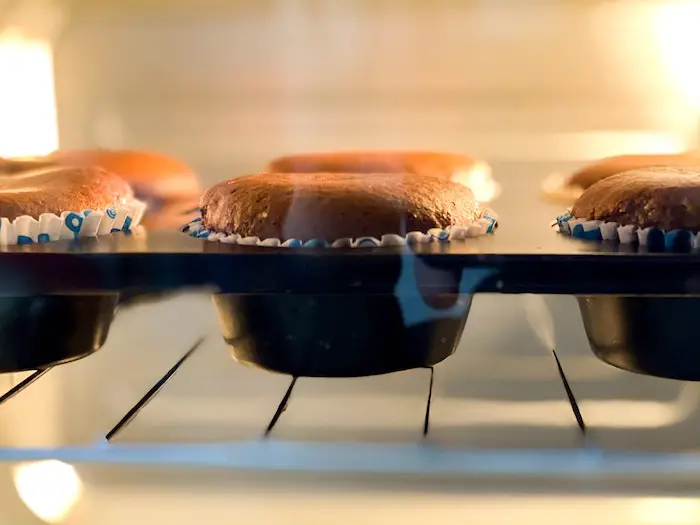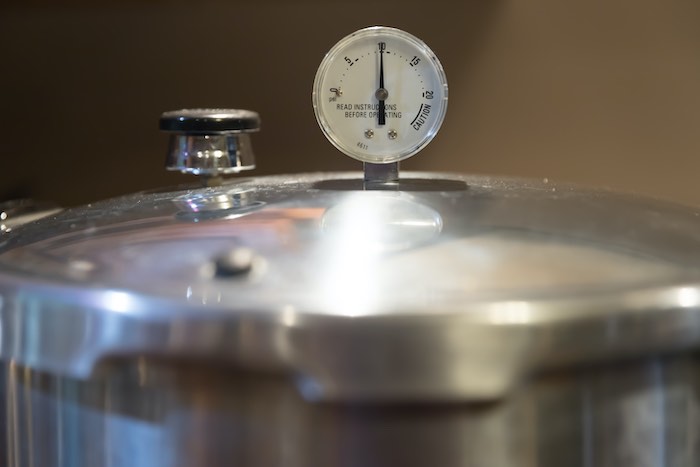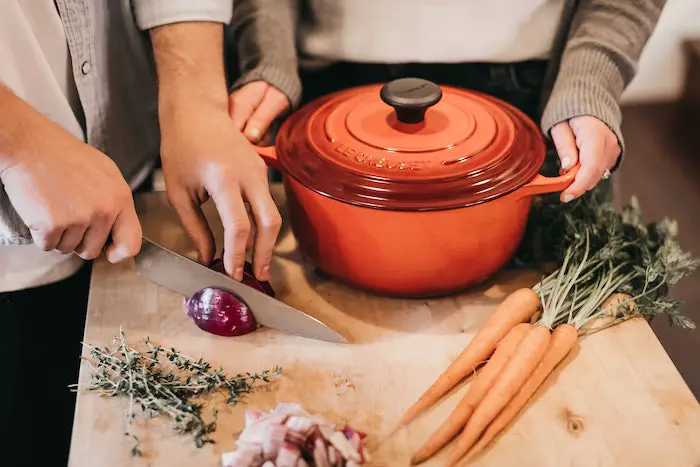If you are new to the hobby and testing your skills at baking, there is a whole new world to discover out there. You likely also have several questions and some apprehension popping up in your mind. Many people are afraid that they might use the wrong bakeware in the wrong type of oven, leading to dire consequences.
One of the most frequently asked questions by newbies is “Can silicone bakeware go in a toaster oven?” The answer to that is yes. Silicone baking pans can be safely used in a toaster oven because these countertop ovens function in a similar fashion as the conventional ovens; they just also happen to be smaller and are not designed to distribute heat uniformly throughout the entire oven.
This implies that the level of heat in the middle of the toaster oven may be higher than the temperature on the edges or sides. To ensure a more even cooking, we suggest that you place something under your silicone bakeware when using it in a toaster oven. Ideally, this generally means a cookie sheet of some sort that can be kept underneath the silicone bakeware to help distribute the heat evenly and adequately and also allow for easier removal from the oven and a more balanced base to keep your baking project even instead of lopsided.
To be on the safer side, we also suggest that you always keep an eye on the food even when the timer is all set. The cooking time may vary a lot based on what you are baking and how hot the temperature gets inside the toaster oven. Toaster ovens are mainly made for “toasting” quick snacks and meals, so anything you place within one stands a much higher burn risk compared to traditional ovens.
To ensure your safety, always wear oven mitts when handling your cookware (even silicone!) to prevent burns and any injury. Silicone may seem less dangerous than touching a hot metal pan, but it can still damage your skin and hurt just as badly. Placing your flexible silicone cookware on a cookie sheet that’s rigid also helps when handling the hot materials and safely removing them from the oven with dropping anything or having an accident occur.
Making Silicone Baking Pans Nonstick

There are numerous reasons why people prefer silicone bakeware so much. Silicone is well-suited for tolerating both cold and heat, and it can be even used in the oven at temperatures up to 428°F. Silicone bakeware (see Amazon) can go directly from the toaster oven to the freezer, which is great for bakers who have less time to devote to the craft and especially the extended cooling times. These pieces are also microwave-safe and easy to clean.
Even though silicone bakeware is generally marketed as non-stick, greasing the bakeware before use is still a good way to avoid risking any unexpected sticking. Silicone is typically nonstick when it comes to candy making or other similar cooking projects, but baking cakes, muffins, or other bread-based treats still leads to some loss of your final product upon removal from the molds, so always be sure to coat the areas you’ll be using with a nonstick spray of your choice.
To make your silicone baking pan truly nonstick, spraying on any type of cooking oil or nonstick baking spray before using the bakeware will be perfectly sufficient. You will simply need to spray the pan with a thin layer of the aerosol oil, then remove any excess that ends up on the unused portions of the silicone. This prevents food from sticking when it is placed inside the toaster oven, but be cautious because overuse of nonstick spray in high temperatures can crisp up the outside layer of whatever you may be cooking within the molds.
Tips to Make Your Silicone Bakeware Last Longer
If you want your silicone bakeware to last longer, the best method is to ensure that you do not leave leftover food or grease on it for a long time. Silicone bakeware is perfectly dishwasher safe, but the ideal method for cleaning is doing so by hand and using gentle dishwasher soap.
It’s best to clean your silicone bakeware as soon as possible after use. Any stuck-on food made be somewhat easy to remove due to the material’s nonstick properties, but leaving any lingering cooking spray to sit for extended periods of time on the silicone can become a total pain to clean up due to how stubborn, greasy, and sticky it will become. Cleaning it while warm and not yet cooled and sticky will save you a lot of frustration later on.
5 Materials You Must Never PUT Inside a Toaster Oven

Besides asking whether they can use silicone bakeware in a toaster oven or not, many people also wonder what other materials they should not use in a toaster oven. Let’s read on to find the list and the reasons too.
Paper Goods
There are some toaster ovens that come with manuals that clearly state that certain items should not be used inside them. The first things on most of those lists are paper towels and paper plates. None of these products are safe when it comes to high temperatures, so using them in a toasting oven will likely cause a fire to erupt and cause serious injury and damage.
Styrofoam
The next material to avoid is styrofoam, which is made from polystyrene. It cannot withstand the heat produced from toaster ovens either, so you need to be sure to always avoid placing any cups or plates made from styrofoam inside of your toaster oven or even close to or on top of the appliance. This material is also highly flammable, so it should always be kept at a safe distance from any heat source in your kitchen or elsewhere. Styrofoam can be used to store food inside of a refrigerator and does well with cool temperatures, but it is not built to withstand heat.
Coffee mugs or cups
While some people tend to indulge in using coffee mugs and cups for making desserts, they are not the best materials to use in your toaster oven. Normal porcelain, earthenware, and china mugs are not safe as they are likely to crack under high heat. Save your mug-based desserts for the microwave.
Plastic
You must not use any plastic materials within the inside of a toaster oven as the high temperatures will cause them to melt easily. No matter what type of plastic ware you have, it should never be used for baking in a toaster oven nor a traditional oven or stovetop. Doing so is a significant fire hazard.
Glass bakeware
Most of the toaster ovens out there are not suitable for glass bakeware due to the high temperatures condensed into a smaller amount of space, but some manufacturers say that their glass dishes are still safe to use inside of a toaster oven. In some cases, a specific product line may be suitable for use inside a toaster oven, but the majority of glass bakeware is not and may become damaged. Using unsuitable glassware in the toaster oven may cause the material to shatter, so always be sure to check the product’s safety labeling before use in such high temperatures.
Related Questions
What materials are safe to use in a toaster oven?
Oven-safe bakeware or cookware is safe to use inside a toaster oven. You cannot go wrong with cast-iron or stainless-steel cookware, too. Aluminum cookware is also a safe choice for toaster ovens.
Why does silicone bakeware take longer to cook?
When you bake cakes, cornbread, brownies, or other things in your silicone bakeware, you may notice that it takes slightly longer to cook everything. Using opaque cookware often requires more time for your food to cook all the way through, so always pay close attention to the recipes and follow all instructions.
When it comes to baking, it’s always best to keep an eye on your food throughout the process too to make sure things are proceeding properly. Silicone is quite a good insulator, so the baking process typically differs from using metal or glass bakeware that heats up hotter and tends to bake more quickly.
See Also:
How To Wash Silicone Oven Gloves (Here’s The Answer)
Can You Put Enameled Cast Iron In The Oven?
4 KitchenAid Countertop Oven Reviews
Can You Put Plates In The Oven?



